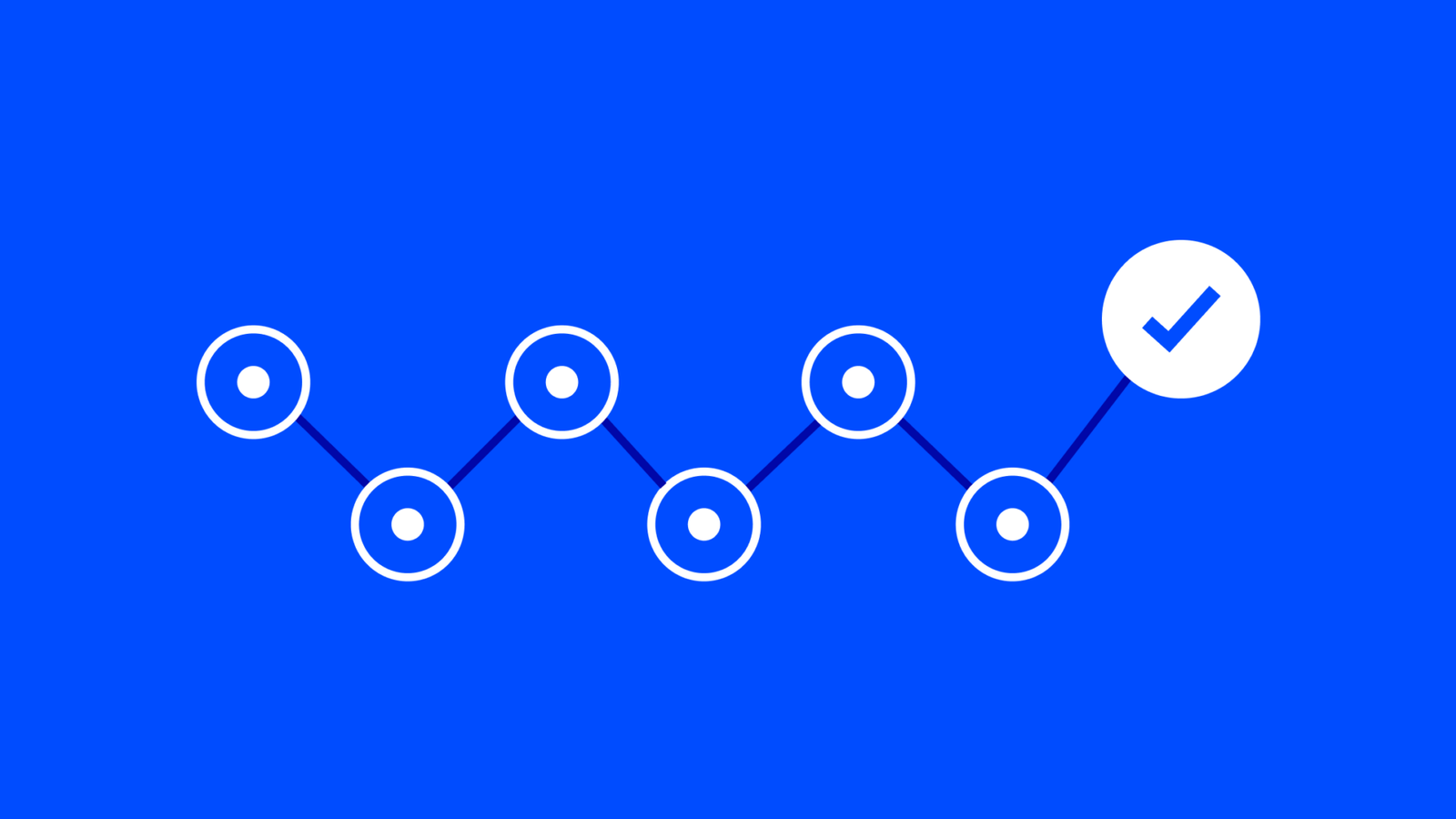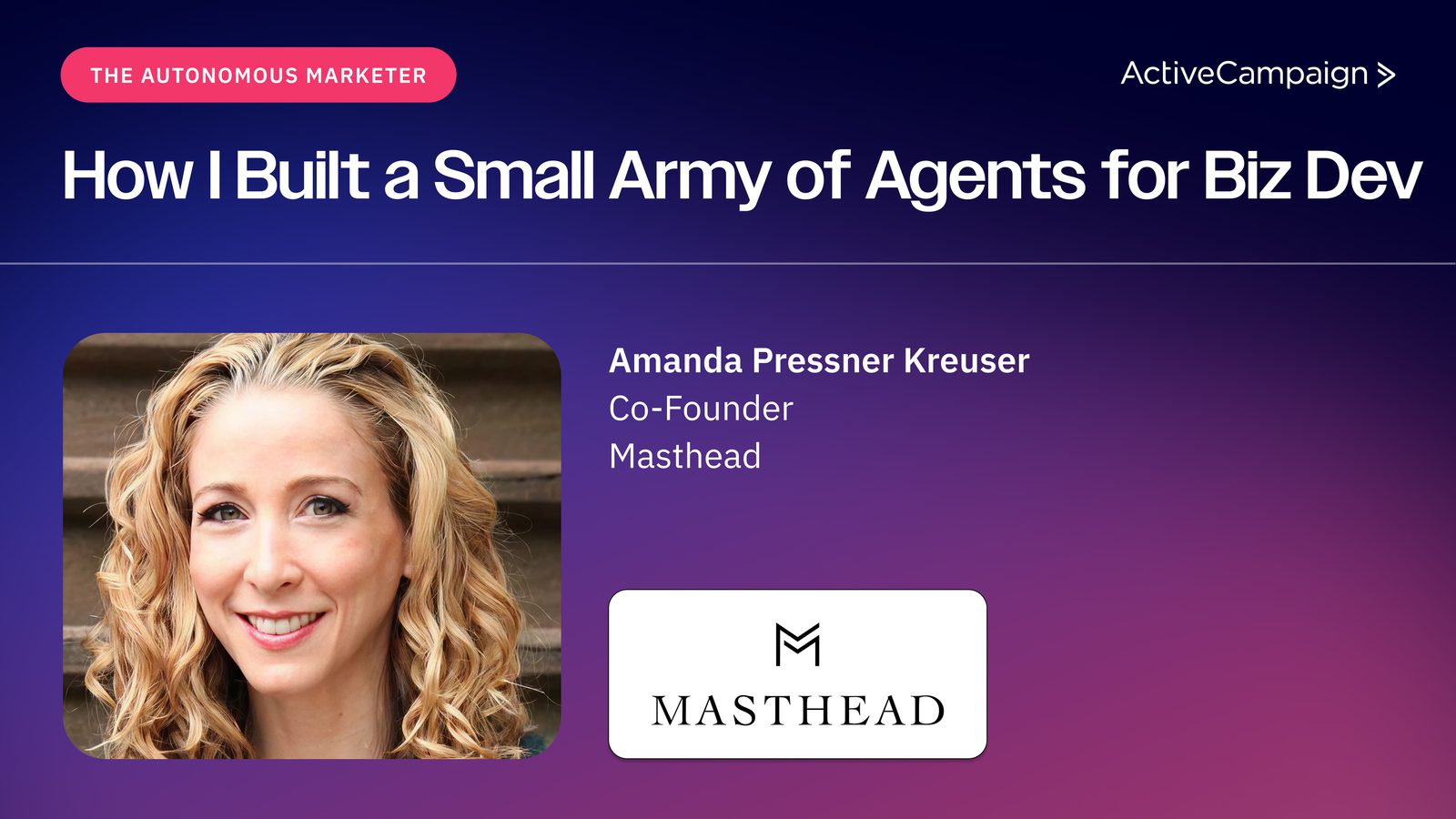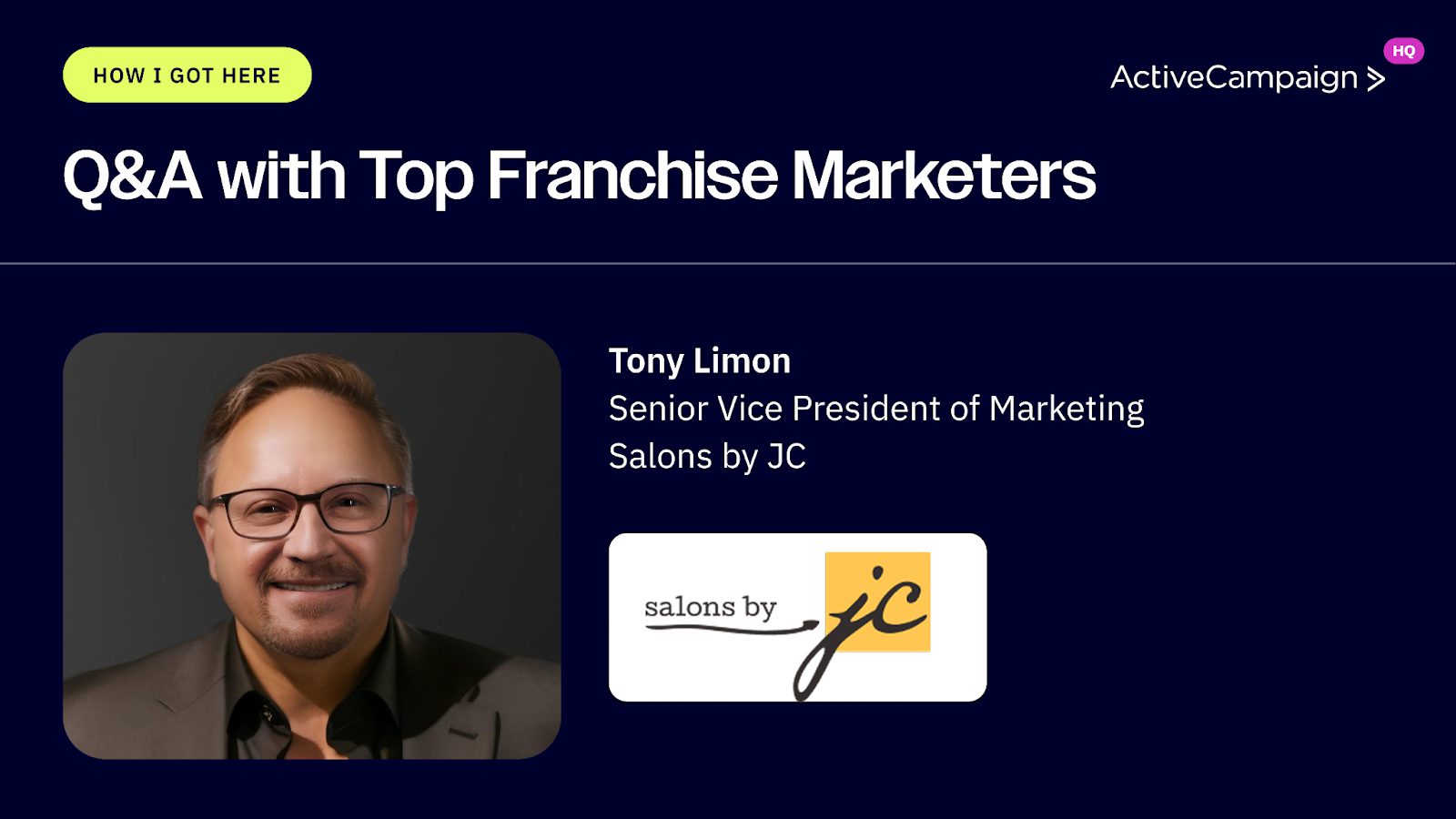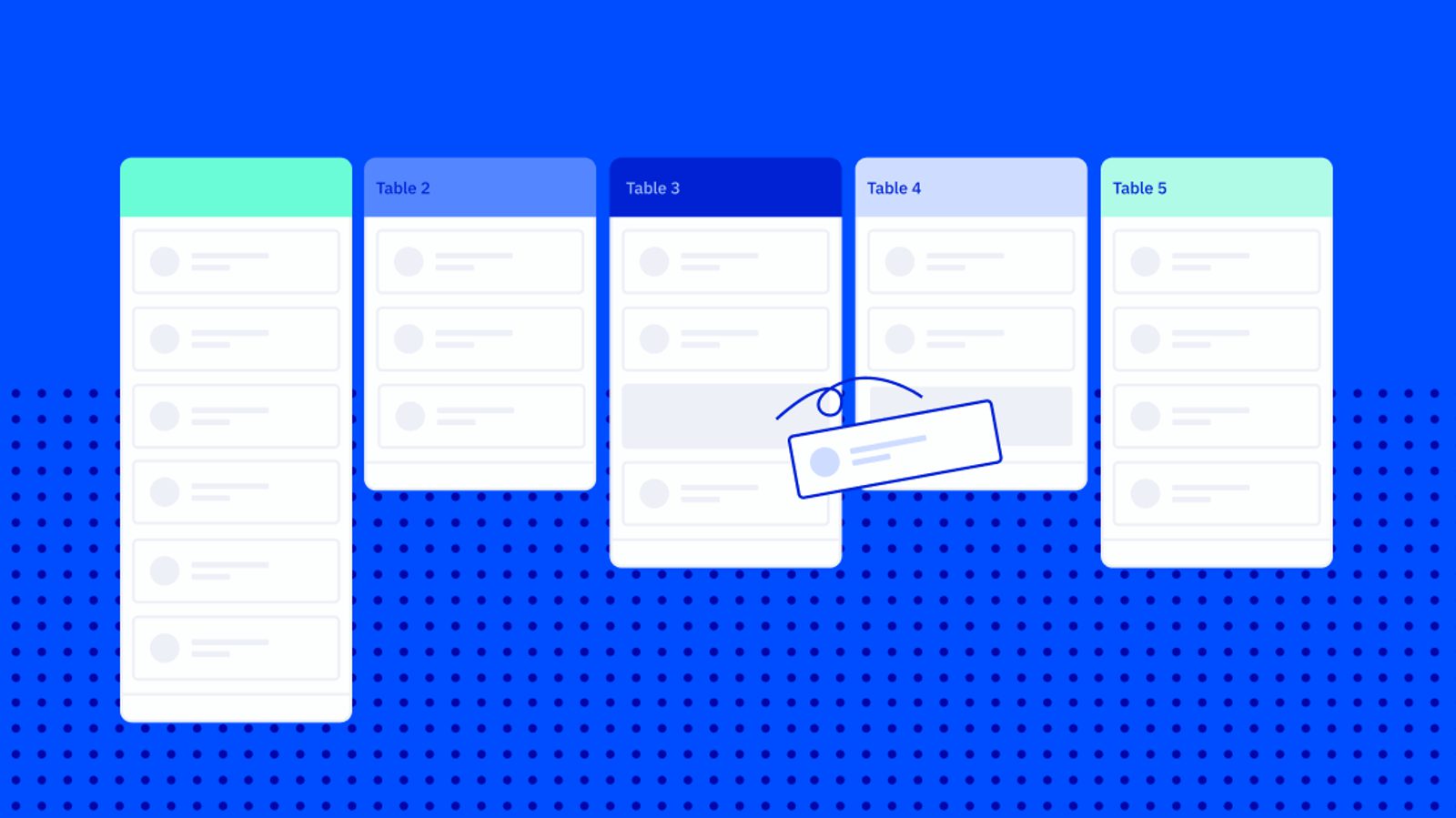Businesses that don't attract leads and convert them into customers don't survive very long.
Data from the United States Bureau of Labor Statistics indicates that 70% of private businesses close before their fifth year. We'll never know the full reasons behind why each business fails, but we do know that 20% of failed startups cite competition as a key reason.
You can't control competing brands, but you can control how you appeal to customers through your sales funnel. A good sales funnel can win you loyal customers, boost your sales, and increase your profits. A poorly designed one will leave you outcompeted.
Of course, that begs the question: how do you build a sales funnel that drives conversions?
In this article, we'll showcase four sales funnel examples from a variety of industries, and break down what makes an effective sales funnel tick.
What is a sales funnel?
Your sales funnel (sometimes called a "sales pipeline") is the process that potential customers, known as leads, travel through to become customers. As the name suggests, leads enter the funnel when they discover your brand and leave the funnel when they finalize their purchase.

Today, sales funnels can include a wide range of channels and touchpoints:
- Social media posts or advertisements
- Email marketing
- Social proof
- Television, radio, and newspaper advertisements
- Content marketing
- Pay-per-click (PPC) advertisements
- Search engine results
- Retail store designs and layouts
- Interactions with salespeople
Sales funnels aren't set in stone. Instead, every buyer has a unique journey through the sales funnel, and, of course, some leads leave the sales funnel at each stage.
Why are sales funnels important for conversions?
Every brand has a sales funnel, whether they realize it or not.
Understanding your brand's sales funnel is crucial for increasing customer conversions.
Once you know what resonates with leads, you can alter your marketing to make it more effective, persuasive, and profitable.
Similarly, mapping your sales funnel allows you to identify sudden changes in your leads so you can adjust your strategy to maintain performance. You can even create a product funnel, building on prospect relationships to drive specific high-ticket product sales.
Good experiences should start the second a potential customer discovers you. So, optimizing your sales funnel helps you create a memorable and positive experience that will incentivize customers to make repeat purchases. Research from Harvard Business School Publishing shows that a 5% increase in customer retention can increase profits by over 25%.
Remember, your sales funnel influences how leads and prospects perceive your brand.
How do sales funnels work?
When marketers map out their sales funnel, they generally use the Awareness, Interest, Desire, and Action (AIDA) model. Here's what typically happens at each of the sales funnel stages:
Awareness
The "awareness" stage covers a lead's first introduction to your brand.
During this stage, customers learn about your mission, vision, offerings, and how you position yourself in your industry (for example, the affordable option, the eco-friendly company, the brand that gives back, etc.).
The content for this first stage (which we call "Top-of-the-Funnel" (TOFU) content) aims to attract curiosity.
Interest
The "interest" stage starts when prospective customers begin to get invested in your brand.
During this stage, customers learn more about your offerings, including price points, features, and your Unique Selling Proposition (USP).
The content for this stage (called Middle-of-the-Funnel (MOFU)) aims to cultivate interest and teach the "ins and outs" of the brand's industry.
Desire
The "desire" stage describes when leads realize they want to purchase your offerings.
During this stage, marketers persuade leads to your brand's product or service and that you offer the solution to their problem. This stage also separates Marketing Qualified Leads (MQLs) from Sales Qualified Leads (SQLs). MQLs want your product but aren't in a position to purchase it, while SQLs are ready to hit "buy now."
The content at this stage is called "Bottom-of-the-Funnel" (BOFU) content.
Action
The "action" stage is self-explanatory, as it describes the stage in which you try to convert leads into paying customers.
Now that we’re at the end of the sales funnel, you might be wondering what marketing channels people use for content at each stage.
The way each brand uses TOFU, MOFU, and BOFU content is very flexible and depends on the brand's audience, positioning, and offerings. However, each stage typically includes these marketing mediums:
- TOFU = blogs, infographics, social media content, images, videos, and articles
- MOFU = ebooks, white papers, case studies, and how-to guides
- BOFU = a free trial, coupons, sales calls, and face-to-face sales meetings
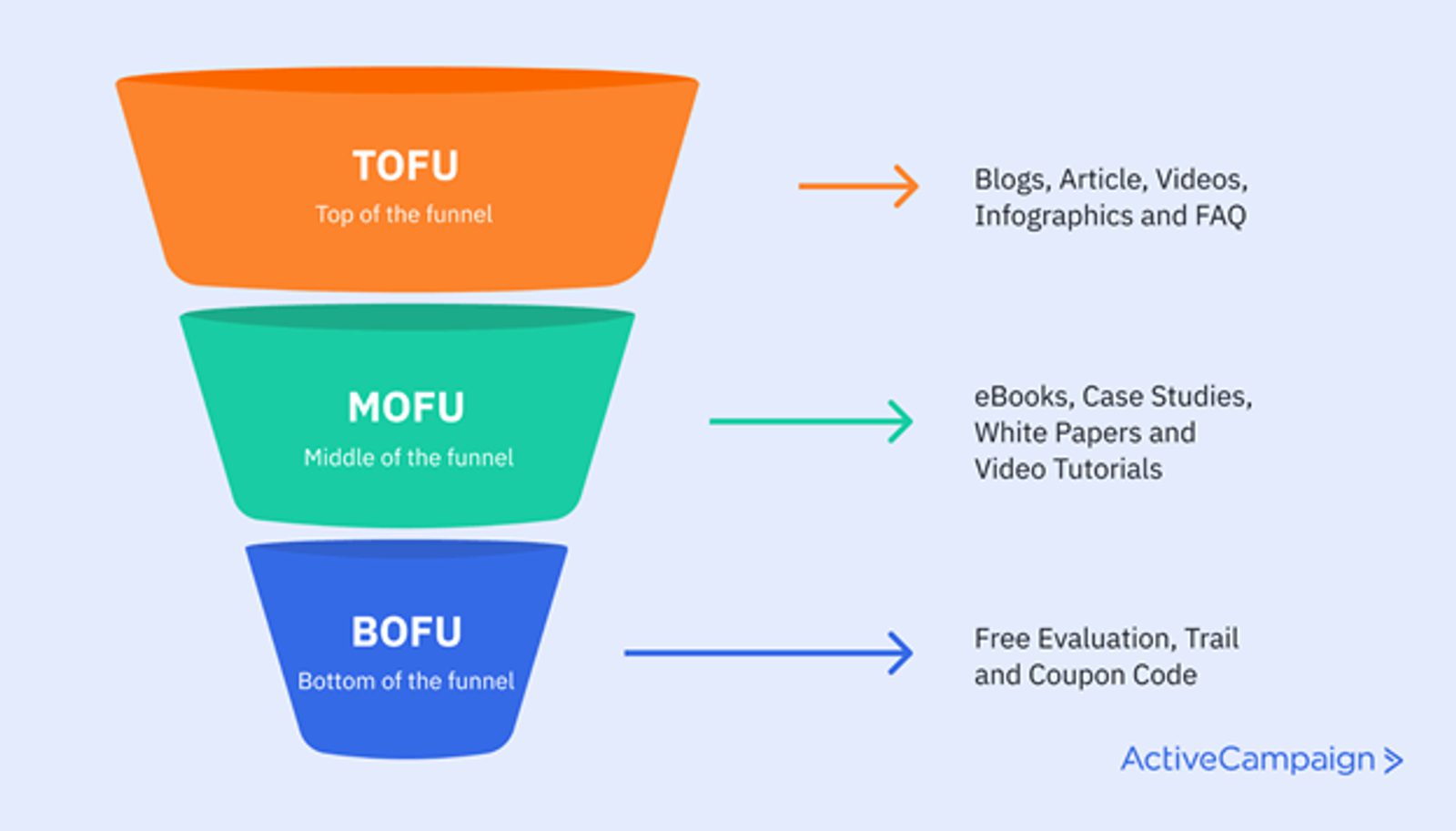
Successful sales funnel examples to learn from
A study of 167 marketing professionals from the United States found that marketers viewed the most effective sales funnel content to be articles, reviews, whitepapers, videos, webinars, research reports, and social media posts.
These studies show that how you design your sales funnel matters. It's not enough to slap together a blog post and hit "publish."
So, what makes a sales funnel effective? A strong sales funnel:
- Has a high lead conversion rate
- Gets leads excited about your offering
- Is educational and teaches leads about your niche
- Makes your brand more memorable than competing brands
- Paints your brand, offerings, and staff positively
- Conveys professionalism
- Produces happy customers with a high retention rate
Now that you know how to spot a strong sales funnel, let's cover four examples that will inspire you to transform your funnel and land more conversions.
Before we get started: Measuring the success of new strategies
If you’re going to try to implement what you learn from these examples, you need a robust analytics or CRM platform in place to help you track the results of what you change.
For example, ActiveCampaign uses AI to power a “Deal Forecast Report,” which could quickly help you identify the impact of any tactics you adopt.

You should also use UTM tags for social media or content marketing campaigns to measure the ROI of different platforms.
Sales Funnel Example 1. ArTea
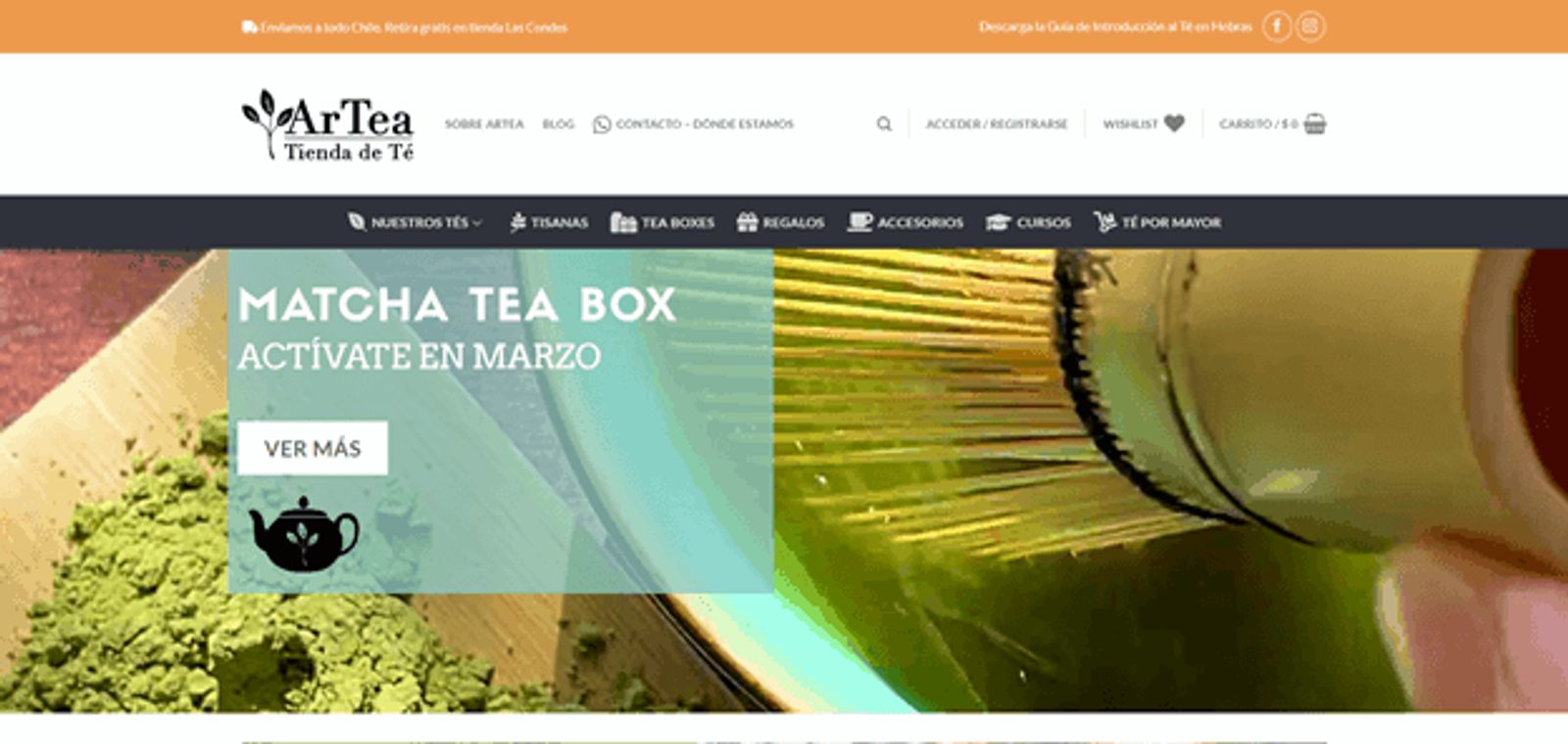
ArTea is a boutique tea business founded by Dominique Blechman and Gabriel Moreno in Santiago, Chile, in 2013. ArTea serves a rapidly growing customer base of tea lovers all over Chile and South America.
Sales funnel steps
Here's how ArTea's sales funnel works:
Step 1. Attention
Potential leads find ArTea through its website (tiendadete.cl), social media profiles on Facebook and Instagram, and PPC search engine advertising. ArTea targets keywords like "wholesale tea" and "loose tea Chile."
Step 2. Interest
ArTea uses its website and blog to increase the prospect’s understanding of its offerings. The brand also uses a downloadable guide to tea as a lead magnet to attract people to join their email list.
Step 3. Desire
ArTea uses email marketing, events, and short courses on tea to build a desire for their products.
Step 4. Action
ArTea sells tea through its online store and its Santiago-based retail store.
Why ArTea's sales funnel is effective:
- It uses multiple marketing channels to attract leads.
- It offers leads discount codes, free shipping, and relevant content through automated marketing emails.
- It answers common questions and provides education about tea.
What you can learn from ArTea's sales funnel
The biggest takeaway from ArTea's sales funnel is the importance of lead nurturing. ArTea's online courses, email marketing, and retail store connect with customers personally and provide a rich experience that more corporate-feeling businesses can't match.
To create a similar sales funnel, create opportunities for customer connection. Try webinars, courses, events, or offer a memorable in-store experience.
Sales Funnel Example 2. GymShark
Founded by Ben Francis in 2012, GymShark is a sportswear brand worth an estimated $1.3 billion. GymShark's target audience is exercise lovers aged 18 — 40.
Sales funnel steps
Here's how GymShark's sales funnel works:
Step 1. Attention
Leads find GymShark through PPC marketing, social media advertisements, influencer marketing, trade show appearances, or social media posts. GymShark currently has 5.6 million Instagram followers and 1.9 million Facebook likes.
Step 2. Interest
GymShark teaches prospects about their products through blog posts, social media posts, and in-store discussions.
Step 3. Desire
GymShark builds a desire for its activewear primarily through sponsoring famous athletes and influencers to wear them.
For example, they partner with famous weightlifters and fitness influencers to wear their gear when filming impressive stunts.
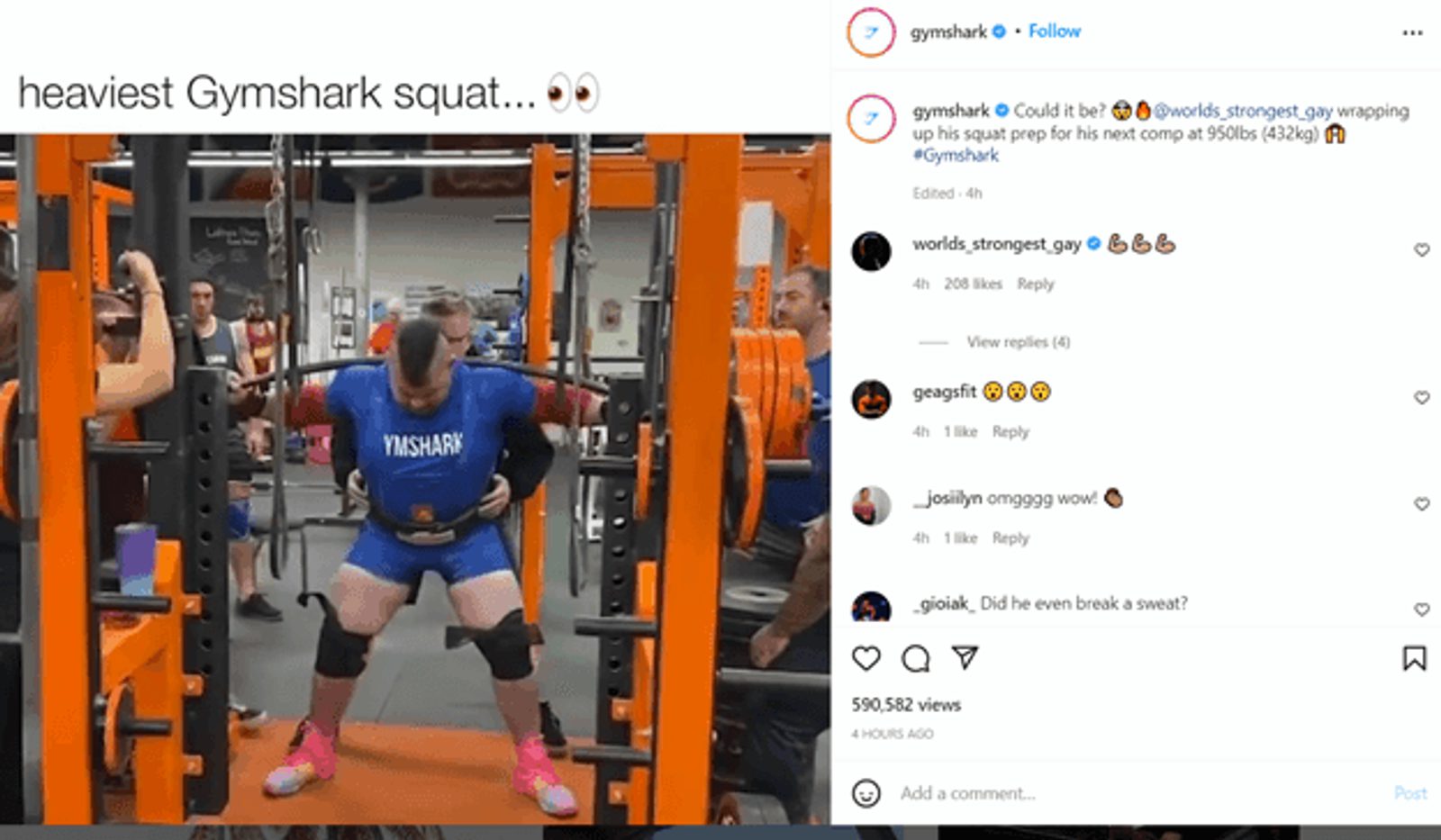
GymShark also leverages email marketing funnels and the GymShark iPhone app.
Step 4. Action
GymShark sells products through its e-commerce store, London-based store, and via retailers.
Why GymShark's sales funnel works:
- It uses recognizable people to make the products look enticing
- It creates a community around the brand on social media
- It engages with leads on platforms they use recreationally (Instagram, TikTok, Facebook, YouTube, etc.)
What you can learn from GymShark's sales funnel
GymShark's biggest strength is how effectively it leverages the Fear of Missing Out (FOMO).
To build FOMO around your brand, find opportunities to showcase your products and services in settings where they are very socially desirable. For example, you could try influencer marketing, show off your products on social media, or send industry figures Public Relations (PR) packages.
Sales Funnel Example 3. Kurzgesagt
Kurzgesagt is an animation studio and design agency that helps brands create explanatory videos, infographics, and illustrations. Kurzgesagt has worked with many famous clients, including Microsoft, Lyft, Siemens, and the Bill and Melinda Gates Foundation.
Sales funnel steps
Here's how Kurzgesagt's sales funnel works:
Step 1. Attention
Leads primarily find Kurzgesagt from its YouTube channel "Kurzgesagt — In a Nutshell." This channel has 17.7 million subscribers and 1.8 billion video views.
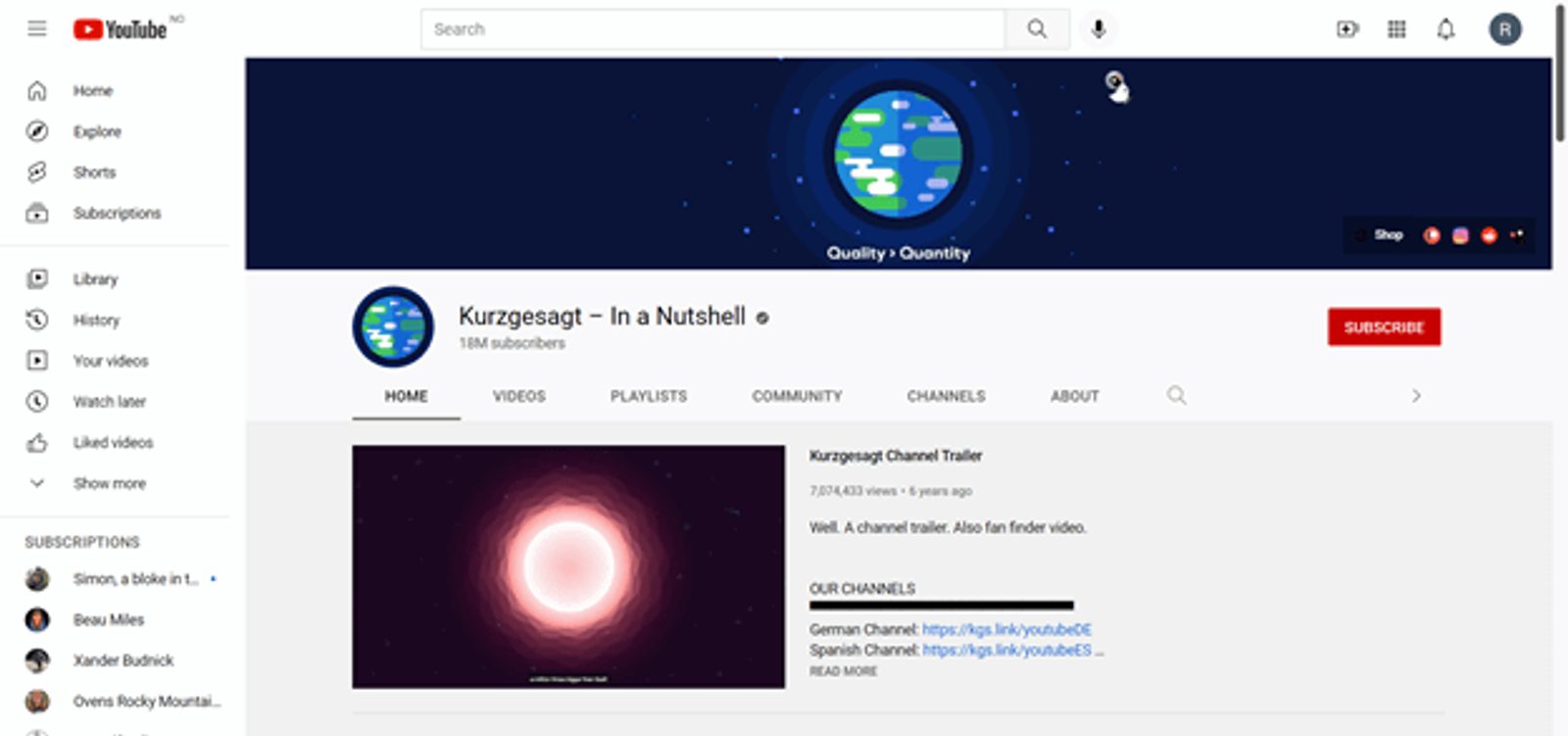
Step 2. Interest
Kurzgesagt's YouTube videos explain complicated topics in bite-sized clips with engaging animations and sound effects. The videos also link to Kurzgesagt's other content, which brings people into the Kurzgesagt community on Reddit, Twitter, Facebook, Patreon, and Instagram.
Step 3. Desire
Kurzgesagt uses its YouTube success to convey expertise and professionalism to potential clients. Their website also showcases their core services.
Step 4. Action
Potential clients get in touch with Kurzgesagt via the form on its website.
Why Kurgesagt's sales funnel works:
- It uses the agency's social media fame (powerful social proof) to showcase its abilities
- It gives the agency mainstream recognition
- It propels Kurzgesagt into the media frequently
What you can learn from Kurgesagt's sales funnel
Kurzgesagt's biggest strength is its mastery over organic social media content.
To use social media to reach potential leads, think of ways to showcase your expertise on platforms your ideal audience uses. For example, you could sell through Pinterest, create YouTube videos, or start a podcast.
Sales Funnel Example 4. Koia
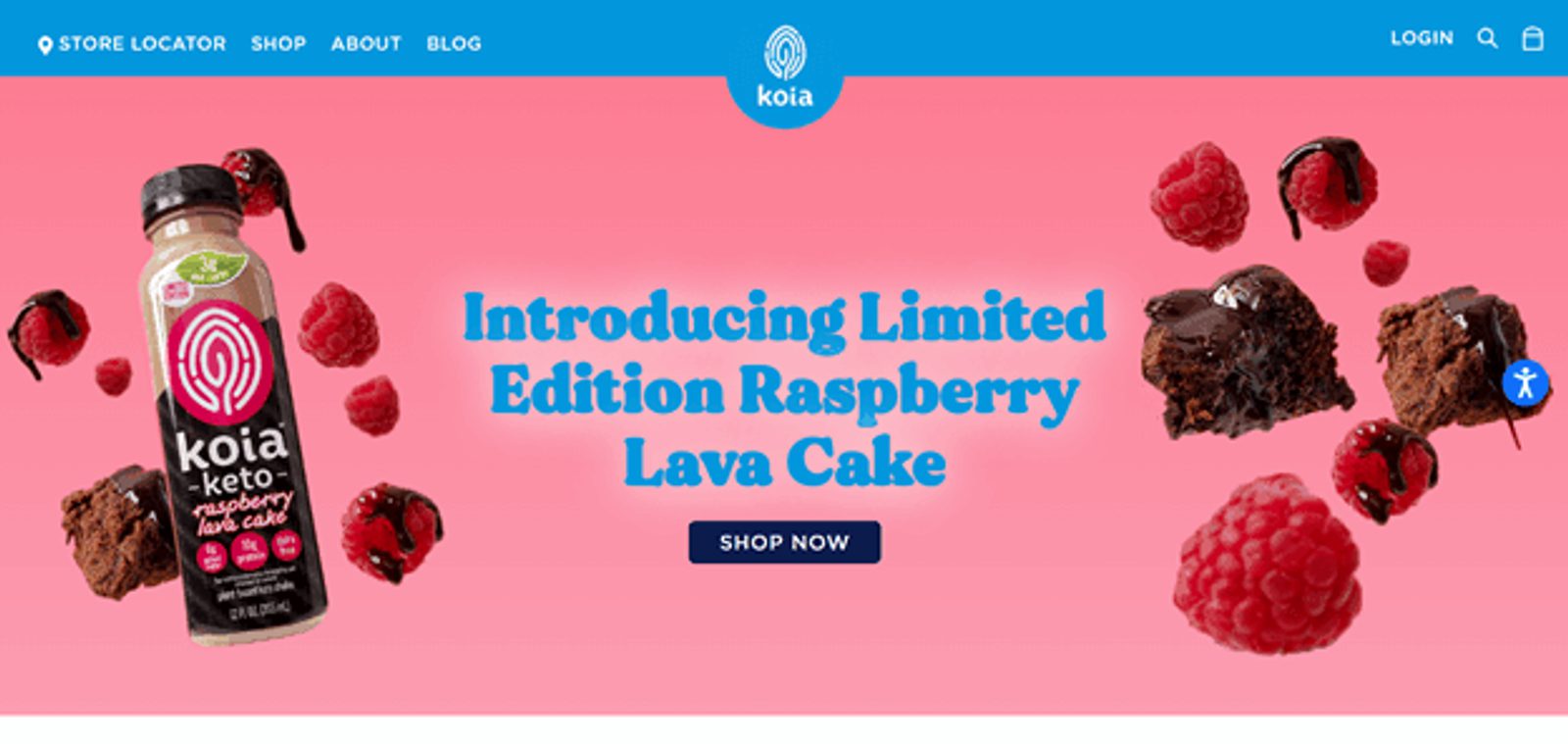
Based in California, Koia is a beverage retailer that produces dairy-free, kosher, and low-sugar drinks. Koia's target customers are people who want an alternative to unhealthy energy drinks and sodas.
Sales funnel steps
Here's how Koia's sales funnel works:
Step 1. Attention
Leads find Koia through their influencer partnerships, PPC advertising, social media posts, or ads. Koia currently has 89k Instagram followers and 47k Facebook likes.
Step 2. Interest
Koia builds interest around its products using its blog, TikTok videos, and aesthetically pleasing Instagram pictures. Koia is very careful with its brand image and uses a distinct color palette for brand recognition.
Step 3. Desire
Koia’s unique positioning on social media helps them relate to a narrow target audience that can’t wait to try their products. They share recipes and create special new flavors to get prospects ready to buy.
Step 4. Action
Koia sells through its e-commerce store and via retailers (which include Target, 7/11, AmazonFresh, and Publix).
Koia even drives repeat actions (AKA sales) with its loyalty program, "The Koia Krew." Members of the Koia Krew can use the Koia website to talk with each other and get exclusive offers. Koia also uses ActiveCampaign for email marketing campaigns and giveaways and exclusive offers to incentivize customers to purchase.
Why Koia's sales funnel works:
- It builds brand loyalty
- It gamifies the customer experience
- It uses strong visual branding to make the brand recognizable
What you can learn from Koia's sales funnel
The biggest thing you can learn from Koia is the importance of solid branding and a customer loyalty program. Using cohesive and aesthetically pleasing branding across your marketing channels makes them look distinctly "yours." Building a brand loyalty program will encourage people to make repeat purchases and give customers social rewards.
Use ActiveCampaign to create a sales funnel that converts
There's no "right" way to build a sales funnel, as the optimal sales funnel for your business will depend on your customers, brand, and offerings. However, here are some things to keep in mind when building your funnel:
- Try to build FOMO by showing off your offerings.
- Leverage multiple marketing channels to reach a wider audience.
- Use social media to increase your online reach.
- Create content that's engaging and interesting.
- Use distinct visual branding across all sales channels.
- Build a brand loyalty program to get people to make repeat purchases.
And, of course, use ActiveCampaign for email marketing. Our platform will help you create effective email marketing campaigns that put the right emails in front of the right prospect, at the right time. Use advanced personalization and automations to create a next-level subscriber experience.
Sign up for a demo to see how ActiveCampaign could transform your business.

